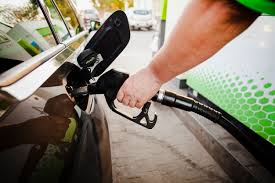
UNDATED – Indiana gas prices have risen 10.1 cents per gallon in the past week, averaging $2.97 a gallon today, according to GasBuddy.com’s daily survey of 3,271 stations in Indiana.
Gas prices are just three cents away from being the highest they’ve been in more than seven years and local residents are beginning to notice.
Gas prices in Lawrence County range from $2.83 to $2.89 a gallon.

Gas prices in Indiana are 21.0 cents per gallon higher than a month ago and stand $1.11 a gallon higher than a year ago.
According to GasBuddy price reports, the cheapest station in Indiana is priced at $2.68 a gallon today while the most expensive is $3.29 a gallon, a difference of 61.0 cents per gallon. The lowest price in the state today is $2.68 a gallon while the highest is $3.29 a gallon, a difference of 61.0 cents per gallon.
The national average price of gasoline has risen 4.5 cents per gallon in the last week, averaging $2.95 a gallon today. The national average is up 10.0 cents per gallon from a month ago and stands $1.12 a gallon higher than a year ago.
Historical gasoline prices in Indiana and the national average going back ten years:
- May 10, 2020: $1.85/g (U.S. Average: $1.83/g)
- May 10, 2019: $2.81/g (U.S. Average: $2.86/g)
- May 10, 2018: $2.89/g (U.S. Average: $2.86/g)
- May 10, 2017: $2.27/g (U.S. Average: $2.33/g)
- May 10, 2016: $2.13/g (U.S. Average: $2.20/g)
- May 10, 2015: $2.60/g (U.S. Average: $2.66/g)
- May 10, 2014: $3.72/g (U.S. Average: $3.66/g)
- May 10, 2013: $3.72/g (U.S. Average: $3.56/g)
- May 10, 2012: $3.77/g (U.S. Average: $3.73/g)
- May 10, 2011: $4.08/g (U.S. Average: $3.95/g)
Neighboring areas and their current gas prices:
- Champaign- $3.17/g, up 9.8 cents per gallon from last week’s $3.07/g.
- Indianapolis- $2.97/g, up 11.1 cents per gallon from last week’s $2.86/g.
- Cincinnati- $2.72/g, down 3.1 cents per gallon from last week’s $2.75/g.

“While average gas prices jumped last week as the nation continues to see COVID-19 recovery, all eyes are now on the Colonial Pipeline and the fact a cyberattack has completely shut all lines, leading to what could become a major challenge for fuel delivery,” said Patrick De Haan, head of petroleum analysis for GasBuddy. “The situation is growing more intense each day that passes without the pipeline restarting, and motorists are advised to show extreme restraint or exacerbate and prolong the challenges. If the pipeline returns to service in the next day or two, the challenges will be minimal, but if full restart doesn’t happen by then, we’re likely to see a slight rise in gas prices, but more importantly, challenges for motorists needing fuel in Georgia, Tennessee, the Carolinas, Virginia, Northern Florida and surrounding areas. I’m hopeful the situation will quickly improve as multiple levels of government are involved, this may become a nightmare should it continue just ahead of the start of the summer driving season. GasBuddy will continue to watch the situation and update as necessary.”
GasBuddy is the authoritative voice for gas prices and the only source for station-level data spanning nearly two decades. Unlike AAA’s once-daily survey covering credit card transactions at 100,000 stations and the Lundberg Survey, updated once every two weeks based on 7,000 gas stations, GasBuddy’s survey updates 288 times every day from the most diverse list of sources covering nearly 150,000 stations nationwide, the most comprehensive and up-to-date in the country. GasBuddy data is accessible at http://FuelInsights.GasBuddy.com.



